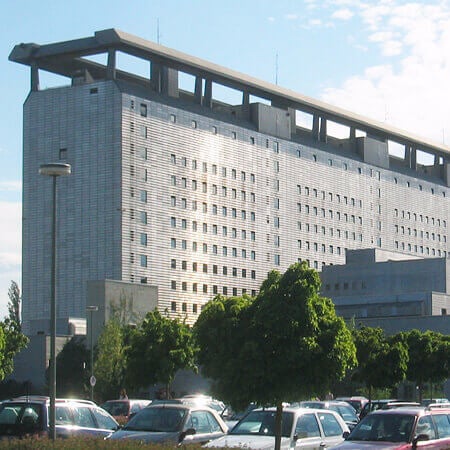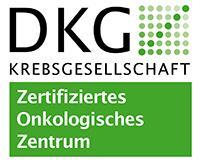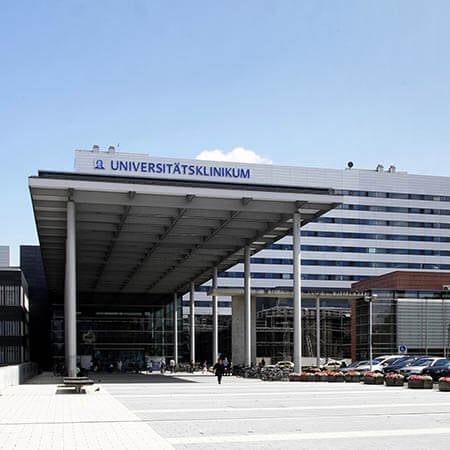Sinus tumors are rare, with a frequency of 1 case per 100,000 people per year. They account for up to 5% of head and neck neoplasms. In German hospitals, most tumors, both benign and malignant, can be successfully cured with the help of surgery and radiation therapy.
Content
- What tumors may develop in the paranasal sinuses?
- Treatment principles
- Treatment of benign tumors
- Treatment of malignant tumors
The tumor is removed with endoscopic techniques whenever possible. If the neoplasm is malignant, surgery will be followed by radiation therapy.
You can undergo your treatment in one of the following hospitals: University Hospital Frankfurt am Main, University Hospital Ulm, or University Hospital of Ludwig Maximilian University of Munich.
You do not have to organize a trip yourself because Booking Health will take care of everything. The company's medical specialists will recommend a clinic, a doctor, and a treatment method for you. The company's managers will help you to quickly make an appointment, prepare documents, get a visa, come to the clinic and find apartments for living (for outpatient treatment), and provide insurance. An interpreter will accompany you to the clinic.
What tumors may develop in the paranasal sinuses?
Among malignant tumors, adenocarcinoma, neuroblastoma, melanoma, and adenoid cystic carcinoma are more common than others. Chondrosarcoma, rhabdomyosarcoma, other sarcomas, and hemoproliferative tumors, such as lymphoma, are less common.
The main benign tumors in this area are inverted papillomas, osteomas, juvenile angiofibromas, hemangiopericytomas, hemangiomas, schwannomas, pleomorphic adenomas, and meningiomas.
The most common tumor sites are the ethmoidal labyrinth and the maxillary sinus. The frontal and sphenoid sinuses are rare localizations.
Treatment principles
The mainstay of treatment is surgery. A surgical approach depends on the location of the neoplasm. As a rule, a lateral rhinotomy is used to treat sinonasal tumors. The intervention can sometimes be performed endoscopically.
Additional treatment is not required after the complete removal of a benign neoplasm. A surgical intervention to remove a malignant tumor is followed by radiation therapy that lasts 6 weeks. Rarely, the disease can be treated with radiation therapy. This tactic can be used if the radiation preceding the operation can reduce the trauma of the surgical intervention.
Treatment of benign tumors
As for benign neoplasms, two tumors are most common:
An inverted papilloma usually begins to grow in the nasal cavity, and then can penetrate into the sinuses. With a probability of up to 2%, it is transformed into cancer. Although initially benign, the tumor is locally aggressive and often recurs after surgery, especially if not completely removed.
A juvenile angiofibroma is a slow growing tumor rich in blood vessels. The neoplasm begins its growth in the sphenopalatine region. This usually affects teenagers and young men. The tumor causes severe nosebleeds.
The goal of treatment is a complete surgical removal, without damaging neighboring organs, and preventing a recurrence. In Germany, these tumors are removed with endoscopic techniques. This ensures minimal trauma, rapid rehabilitation and good cosmetic results without compromising the therapeutic outcome. Studies have shown that the probability of curing the disease with an endoscopic method in specialized centers is not lower than with an open operation.
Treatment of malignant tumors
In Germany, even some malignant tumors can be removed endoscopically. In addition, if an approach is through a craniotomy, a lateral rhinotomy, or an incision in the midface, the operation is performed under endoscopic guidance, which increases the likelihood of a complete tumor removal and makes the operation safer.
Tumors that grow into the facial tissues cannot be removed with endoscopic techniques. In such cases, open surgery is required.
Tumors with an abundant blood supply cannot be removed endoscopically as well. However, this problem was solved in Germany. Doctors carry out embolization 1-2 days before the removal of the neoplasm. This is a minimally invasive procedure performed through an incision in the leg or arm. Doctors clog the arteries with emboli, depriving the tumor of its blood supply. It is then removed using an endoscopic technique without the threat of bleeding.
Doctors in Germany perform operations to remove sinus tumors under the guidance of intraoperative computer navigation. Systems based on CT and MRI scans, as well as 3D CT angiography, are used.
If it is necessary to remove the tissues from the base of the skull or dura mater during the operation, doctors reconstruct them. The reconstruction involves the use of the patient's own tissues, such as cartilage, fat, bones, and fascia.
Sometimes doctors have to remove a tumor in the maxillary sinus region of the upper jaw. In this case, a resection of the upper jaw is performed, and a reconstructive stage of the operation is required to restore the aesthetics of the face and chewing function. The jaw is restored with autologous bone and local flaps, followed by dental implantation.
You can undergo your sinus tumor diagnostics and sinus tumor treatment in Germany to expect good results. Doctors successfully cure the majority of not only benign, but also malignant neoplasms. Endoscopic methods can often be used to remove tumors. The removed tissues are reconstructed to restore the patient's appearance and the functional state of the damaged organs. With the help of the Booking Health service, you can find the cost of treatment and make your appointment at the best price. Our specialists will help you to find a clinic in Germany and arrange your trip.
Authors:
The article was edited by medical experts, board-certified doctors Dr. Vadim Zhiliuk and Dr. Sergey Pashchenko. For the treatment of the conditions referred to in the article, you must consult a doctor; the information in the article is not intended for self-medication!
Sources:
National Library of Medicine
Healthline
NORD - National Organization for Rare Disorders




















